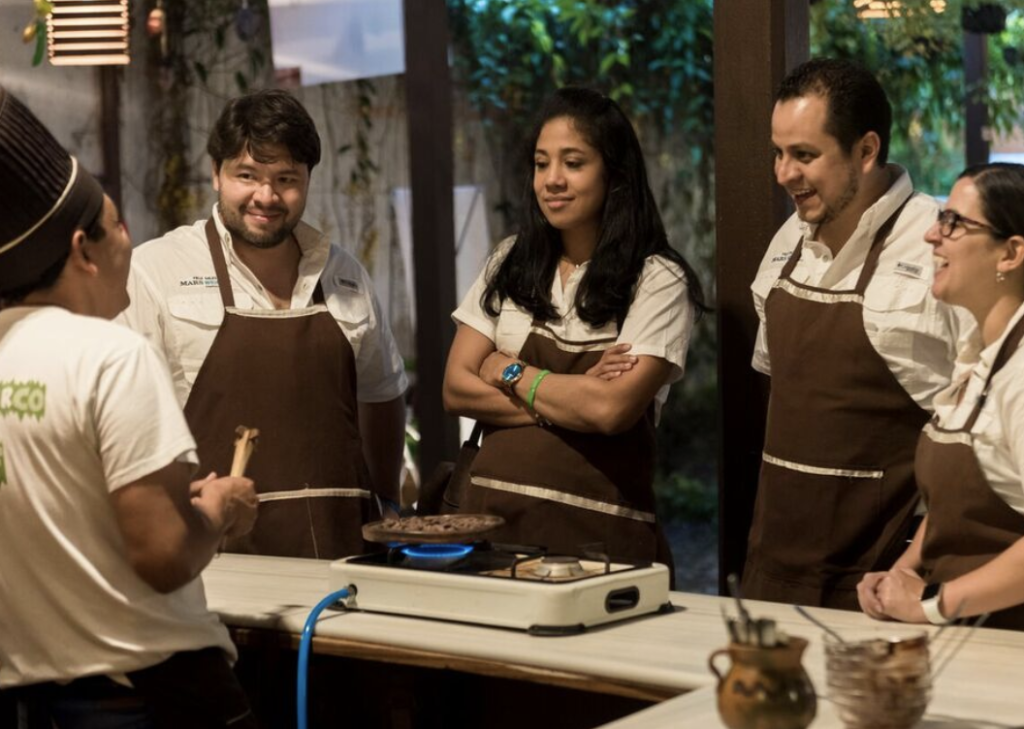Walking along 5a Avenida Norte, the iconic Arco de Santa Catalina greets you with its historic charm. This arch, a symbol of Antigua, was originally built in the 17th century to allow nuns from the Santa Catalina convent to pass from one building to another without going outside. The arch is set against the dramatic backdrop of Volcán de Agua, adding to its picturesque appeal.
The Significance of Guatemala’s Coffee
Continuing your walk, you encounter the new Starbucks, a nod to Guatemala’s rich coffee culture. Guatemalan coffee is renowned for its unique flavor profile, influenced by the country’s volcanic soil, high altitudes, and ideal climate. It’s expertly roasted and well rounded with bold candied lemon flavors Coffee is a major export and a vital part of the local economy, supporting many small farmers and their families.
Discovering Local Crafts at Nim Pot
Next, you pass by Nim Pot, a textile and handicraft store that showcases the vibrant artistry of Guatemala. This shop is a treasure trove of traditional Mayan textiles, handmade by local artisans. It’s a great place to appreciate the intricate work and vibrant colors that characterize Guatemalan craft.
Indulging in Sweet Delights at Choco Museo
Turning into Choco Museo, you enter a world of chocolate. This museum is not just about tasting chocolate but also learning about its history and production. The cacao bean has been cultivated in Central America for thousands of years, and it was here that the chocolate bar was invented. Interactive exhibits and workshops make it a fun and educational experience for all ages.

Delving into History at Museo del Libro Antiguo
Finally, a visit to the Museo del Libro Antiguo rounds off your journey. This museum, dedicated to old books, emphasizes the importance of literacy and education in Guatemala. It houses rare manuscripts and books that offer insights into the country’s history and cultural heritage. Promoting literacy is crucial for creating educational and job opportunities, helping to build a brighter future for Guatemalan children.
Literacy rates in Guatemala have been improving, but challenges remain. The adult literacy rate is approximately 81%, with significant disparities between urban and rural areas, and between genders. Girls often face greater obstacles to education, with many quitting school early to work or care for family members. In rural regions, girls are particularly vulnerable, with educational attainment among the lowest in Latin America.
Quality schools in Guatemala are still scarce, particularly in rural areas. However, those who attend better schools have a higher chance of continuing to higher education. The percentage of Guatemalan students who go on to university is relatively low, reflecting broader educational and socioeconomic challenges
